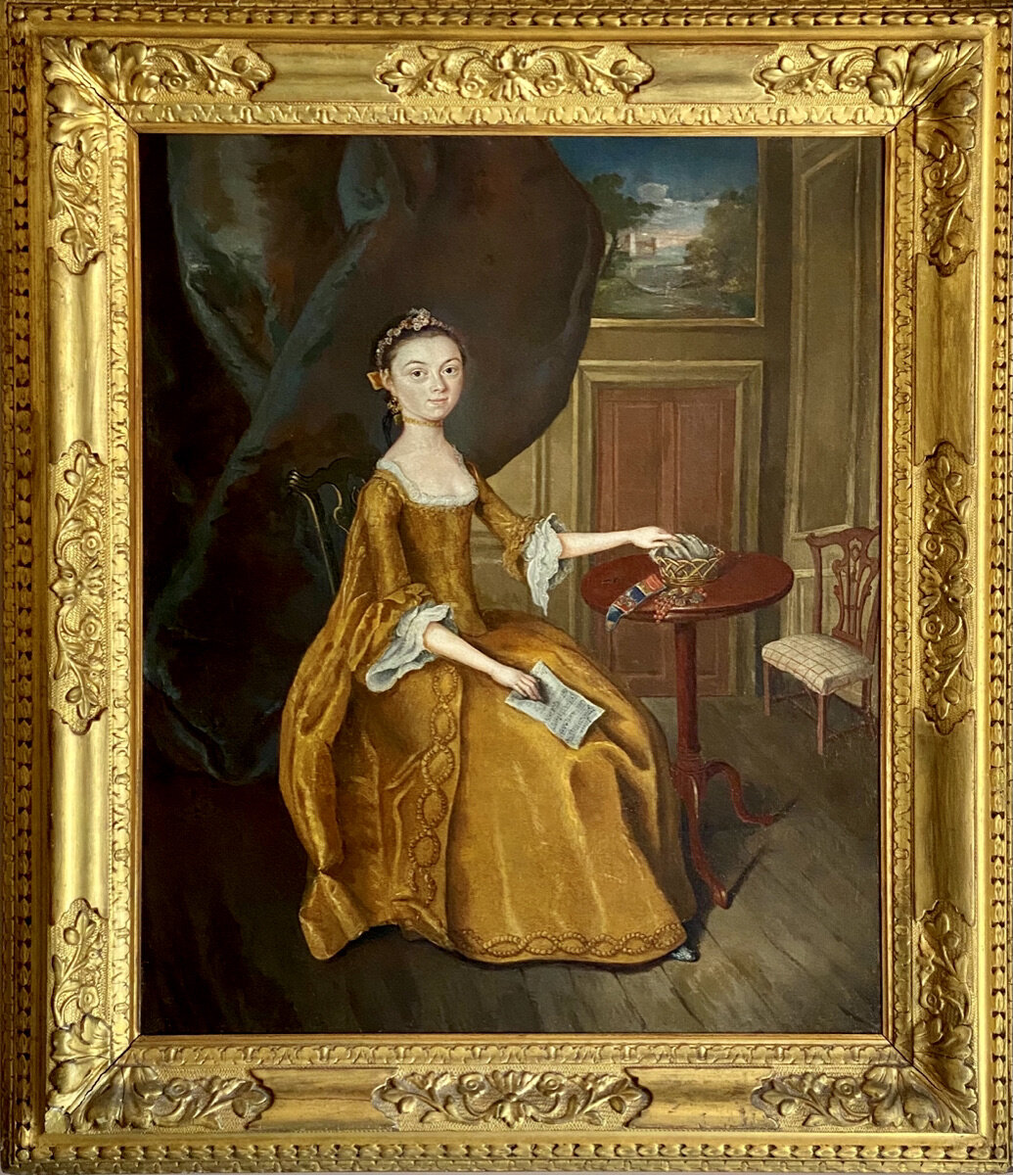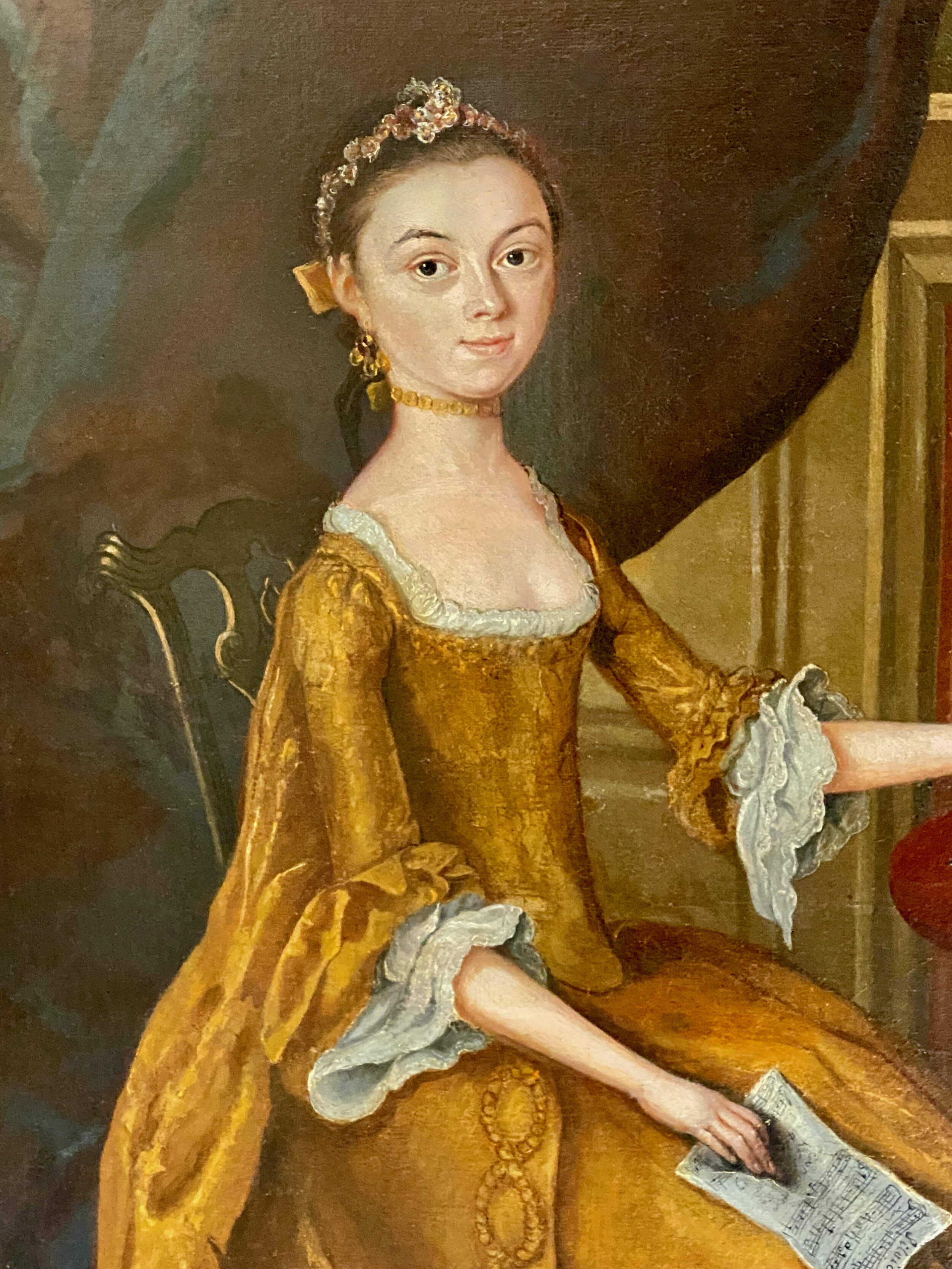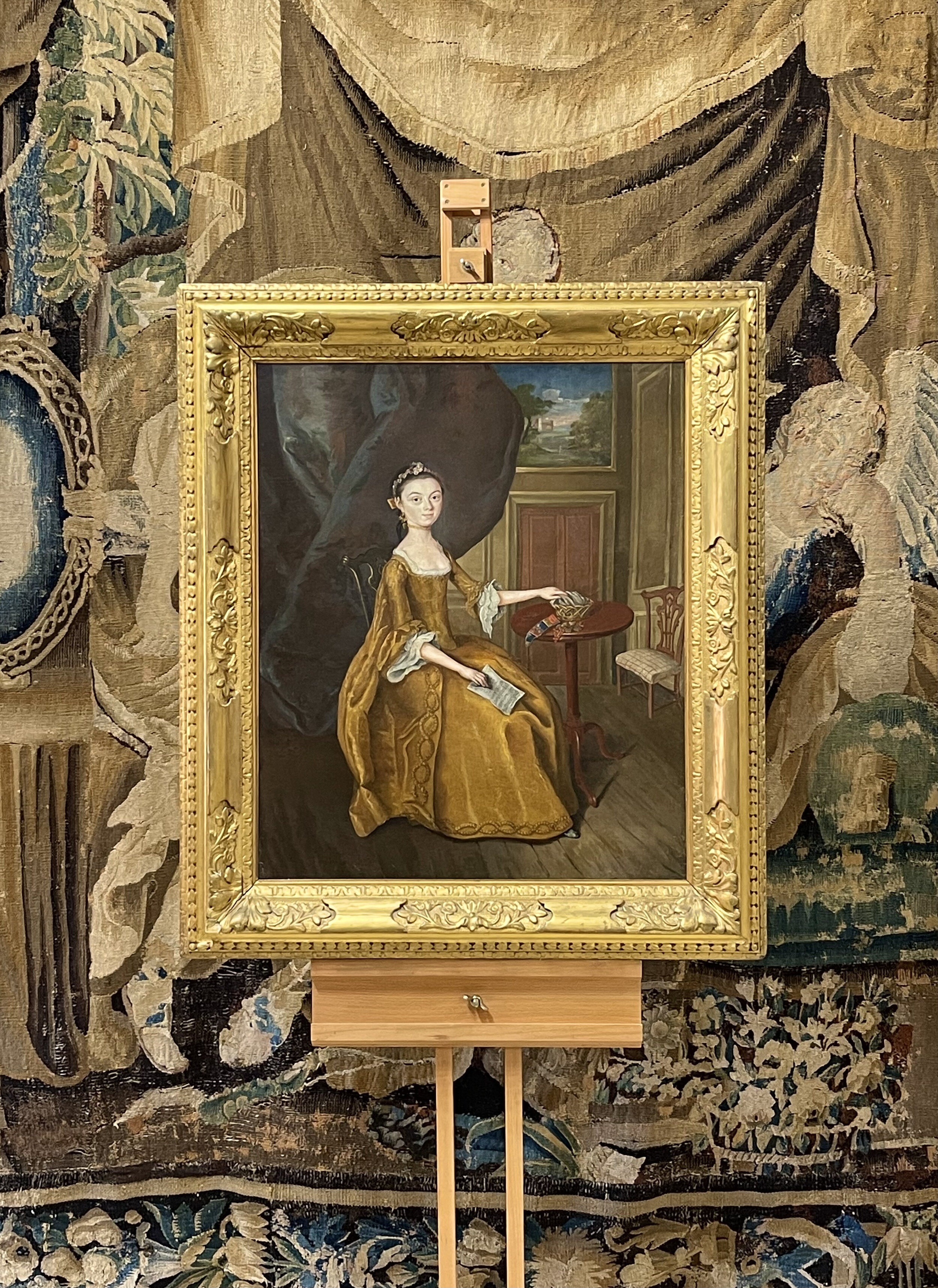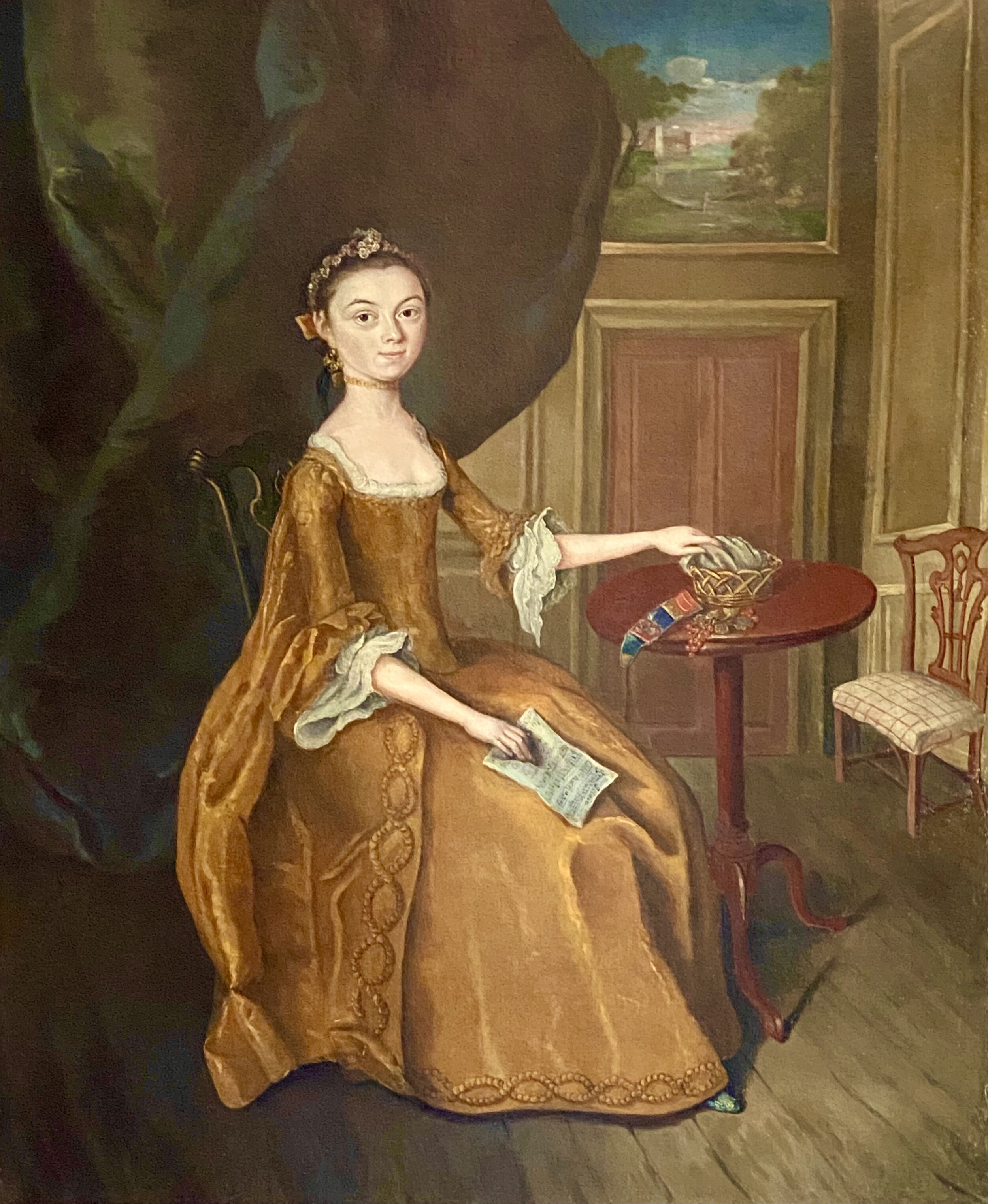





18TH CENTURY ENGLISH PORTRAIT OF AN ELEGANT YOUNG LADY - CIRCLE OF ARTHUR DEVIS (1712-1787)
A fine, decorative and highly detailed 18th century English portrait of an elegant young lady painted circa 1755. The subject of this painting wears orange silk dress and is she is seated next to a table, within a panelled drawing room.
The artist has included so many tantalising details within this painting and as a result it provides an evocative window into the life of a young lady from a prosperous family, in England in the 18th century. The designs of the furniture include a Chippendale inspired mahogany splat back chair and an elegant table. Even the panelling of the room within which the lady sits, includes a painted landscape above the door, within this it is even possible to see the outline of a fisherman wading through the water of the landscape beyond.
In contrast to these realistic details is the extravagant green drapery left flying behind her head, adding a sense of drama and inspired by traditional old master portraiture. The composition set within an interior echoes the so-called ‘Conversation piece’ genre. This popular form of painting took great inspiration in its modest size and subject matter from Dutch interior paintings of the seventeenth century. This particular example, which bears a not so modest frame, is a fine example of what became the English Conversation Piece in the eighteenth century.
The portrait is reminiscent of paintings by the likes of the Lancashire born Arthur Devis (1712-1787). Devis came to specialise in family portraiture incorporated into the Conversation Piece genre. His settings for these portraits were diverse, from eighteenth century parklands to fine contemporary interiors. It is quite possible that the creator of this work of art knew the works of Devis, which often lavished special attention to architectural fittings and details. This is a genre which the young Gainsborough too excelled in. Despite the very characterful face, and finely preserved brushstrokes, it has not been possible to identify a specific artist with this work.
It is clear that it is the attributes and accomplishments of this young lady that are being alluded to here. Within the painting there are actually two worlds being contrasted, the worlds of diligent domesticity and that of pleasure. The inclusion of the landscape above the door also subtly points to this in the juxtaposed realities between the external world and the safe sphere of the home in which she calmly resides. It appears that the young lady has just put away some brightly coloured needlework which may be contained within a basket lying on the table. Needlework, and the precision and diligence required to perfect this art, was often used in Dutch painting of the seventeenth century to suggest good protestant morals and a strong work ethic. In contrast to meticulous needlework, in her right hand she holds a sheet of music. It is true that music had become a very important accomplishment for young women in the eighteenth century. The Musicianship of young ladies was often alluded in symbolic terms within paintings of that century. Notions of harmony, and the home as a foundation on which future happiness would spring, are often emphasised in such pictures. However, music’s ability to rouse the senses sometimes associated itself with the more pleasurable and indulgent activities of life. We are left speculating whether this lady was the young wife of a patron, flaunting her accomplishments in visual and symbolic terms, or whether she was in fact in search of a husband. The bunch of grapes on the table, the great lubricator of love, suggests more about the pleasures to come.
Carefully written at the top of the sheet of music is the name ‘Silvia’. This tantalising detail can be read in several ways. Is this the name of our sitter, perhaps? May she have just received this musical tribute from an admirer perhaps? Equally, may it be some reference to some forgotten ballad or character from a play? Silvia, daughter of the Duke of Milan in Shakespeare’s Two Gentlemen of Verona, might be referenced here for example. For it was this heroine who played the game of courting with tremendous agility, including writing and receiving love letters from her suitors.
Tthe identity of this elegant sitter has become obscured over time, and we are left wondering what life she may have led, as a result.
This fine portrait is in an excellent state of conservation and is ready to hang in a later antique carved and gilded Lely style frame.
Higher resolution images on request. Worldwide shipping available.
Canvas: 25” x 30" / 64cm x 76cm. Frame: 31.5” x 38" / 80cm x 97cm.
Internal Ref: 00130
Price: £7,950

